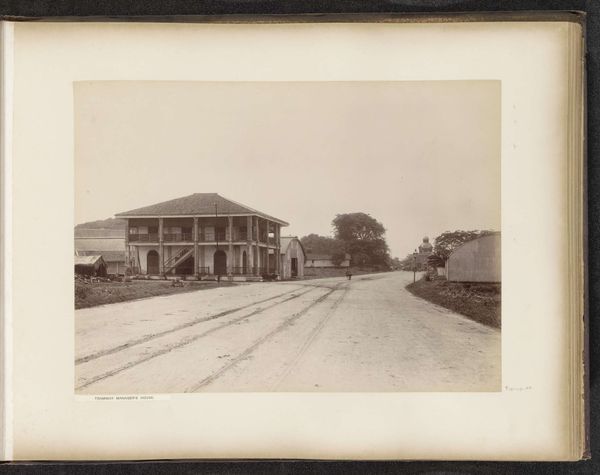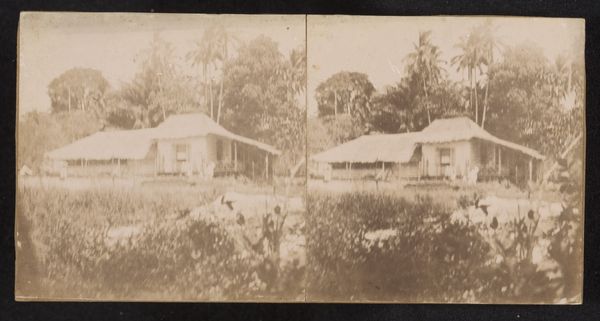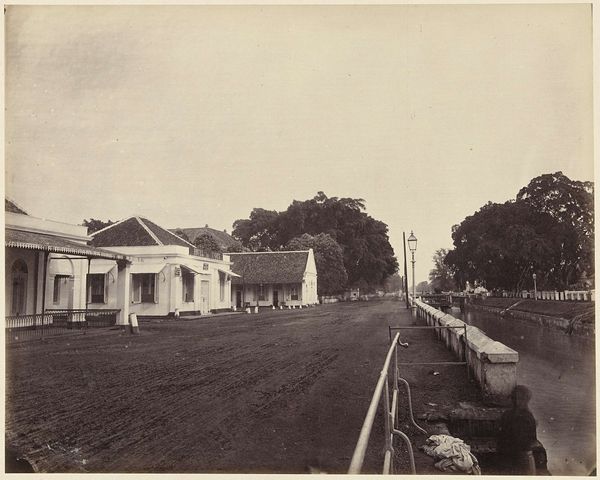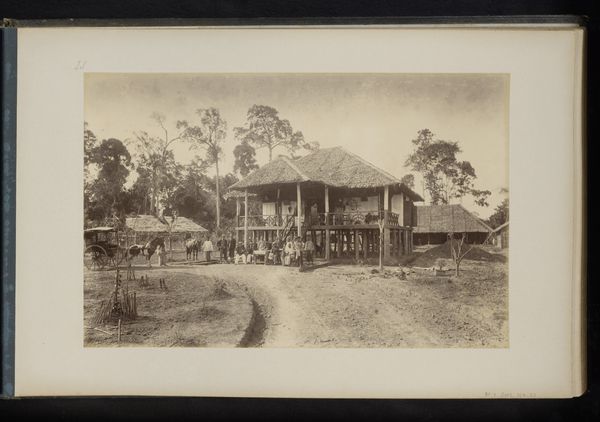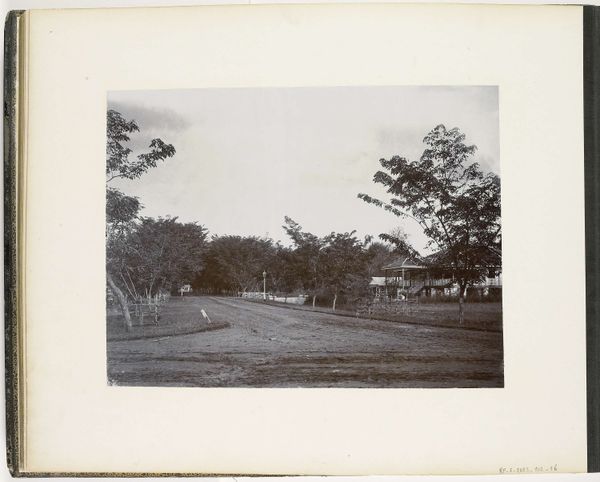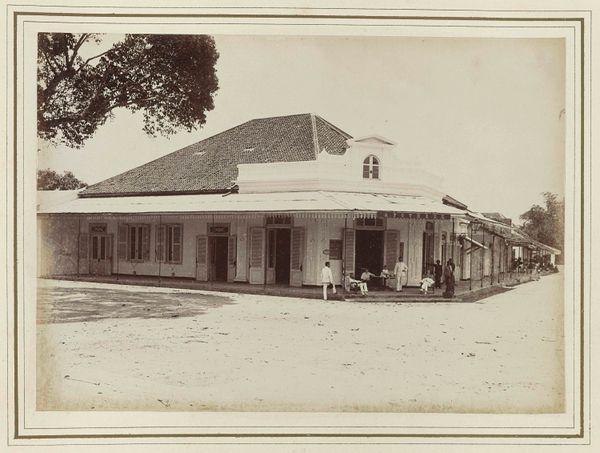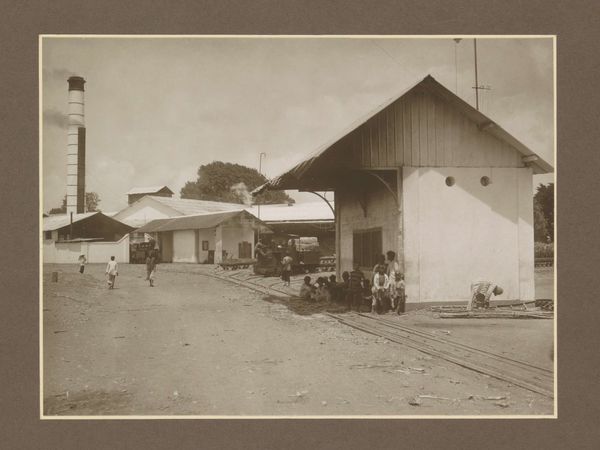
print, photography, gelatin-silver-print
#
muted colour palette
#
photo restoration
# print
#
landscape
#
photography
#
gelatin-silver-print
#
realism
Dimensions: height 279 mm, width 392 mm
Copyright: Rijks Museum: Open Domain
Editor: This gelatin-silver print, titled "Stationsemplacement," dates back to 1921 or 1922 and its artist is currently listed as Anonymous. It depicts a rather humble train station. The mood is... surprisingly quiet and still. I’m drawn to its stark simplicity. What do you see in this piece, from your perspective? Curator: Well, looking at this image through a historical lens, I see a fascinating intersection of technology and colonialism. Consider the societal role of railways in the early 20th century: they were crucial for resource extraction and expanding colonial control. Who did this railway serve, and to what ends? Editor: That’s a compelling point. The railway enabled the movement of people and goods, but it also could've facilitated exploitation. Do you think the artist was consciously commenting on this? Curator: Possibly. The lack of figures could be read as a deliberate choice, emphasizing the infrastructure over human activity and raising questions about its purpose. Perhaps there’s a critique of industrial expansion here. How does the composition support that reading, in your view? Editor: I hadn’t considered that absence. Now, I see how the buildings seem almost...isolated. Maybe it's an intentional commentary on the lack of community benefit. Curator: Exactly! By looking at photography not just as art, but as a cultural artifact embedded in the political realities of its time, we uncover these layers of meaning. Consider how institutions, such as the railway company, might have shaped the commission or the intended audience. Editor: That’s given me a totally new understanding, shifting my perspective. It's not just a pretty picture of a station. Thanks! Curator: And I appreciate your fresh take on its composition! It helps highlight the potential social critiques embedded in what appears to be a straightforward image.
Comments
No comments
Be the first to comment and join the conversation on the ultimate creative platform.
